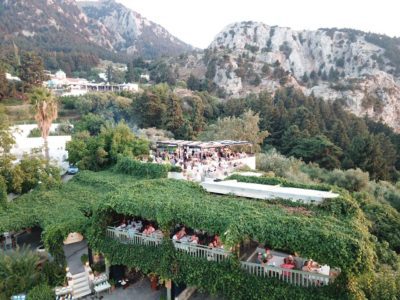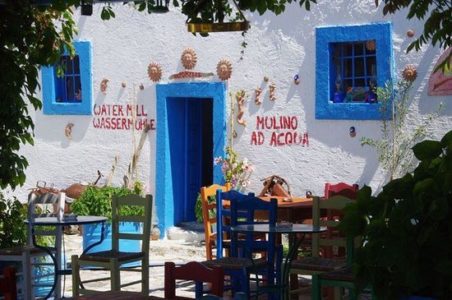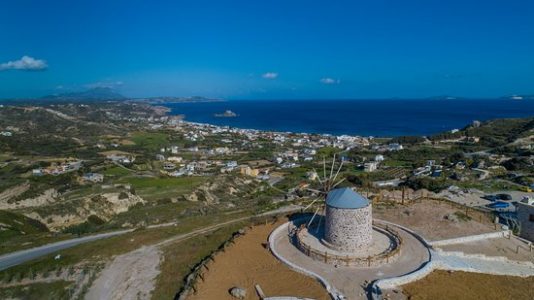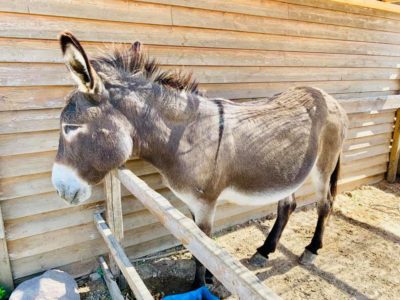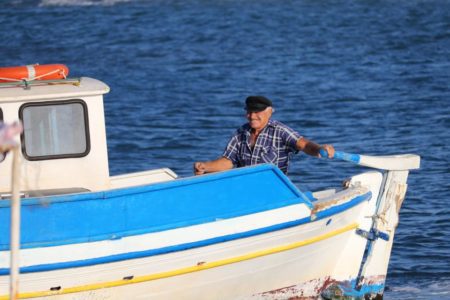While the coastal area of the island of Kos is very touristic, the countryside is still full of authentic villages that have managed to maintain their traditions. The villages of Asfendiu, Zia, Asomatos, Evangelistra and Lagudi, are just a few km out of Kos Town and can give you the chance to discover a less touristy part of the island and more linked to its own origins.
Villages of Kos
Platani
Afternoon is the ideal time to visit the villages out of Kos town, including views of the sunset! The nearest village Platani is situated on the road to Asklepion and known as “the Turkish village ” because here lives the Turkish minority remained in Kos after the end of the Ottoman Empire. You will find the mosque, a beautiful square with tavernas offering Greek and Turkish specialties and traditional cafes.
At the end of the village is located the garden of Hippocrates and The International Institute of physicians. From the archaeological site you can continue to the famous village Zia along a panoramic road offering a lunar landscape in the first half and a beautiful forest in the second. Along the way you will find some interesting villages, where only few people are living.
Villages of Kos on the mountain
Zia
The village is probably the most known and popular tourist village of Kos with manicured souvenir shops, restaurants with typical Greek food and a nice landscape. Shops are open all day until late at night where you can find various types of ceramic souvenirs, precious metals, stone, wood, products for the welfare of the body, olive oil and local wines.
We recommend you try the Kanelada, the cinnamon syrup typical of Zia. Do not miss the sunset, that in Zia is spectacular thanks to the amazing views of nearby islands. At sunset time Zia is the most charming and romantic place on island of Kos. For walkers, from Zia you can follow a path that climbs to the peak of Mount Dikeos, the highest top of Kos (846 m).
Once at the top, you can admire the church dedicated to Christ, the great Greek flag and the Cross Orthodox and of course the view over the islands of Dodecanese. The village of Zia is also the place where there is the traditional Greek dinner with dancing, singing and Greek dinner. Greek night excites especially those who come for the first time in Greece.
Asomatos
Asomatos is a small village next to Asfendiou, in the centre of the island, that gradually has become a neighbourhood of Asfendiou. Totally untouristic and still keeping its traditional character, Asomatos has no tourist facilities. Its small stone houses and the paved streets emit an old charm and visitors feel the traditional vibe of Kos here.
The surrounding region has much greenery and provides good trekking routes, if you love trekking and nature. This village is built on the lower part of Dikeos Mountain. In a landscape surrounded by pines, eucalyptus and olive trees you get to Zia.
Lagudi and Pyli
A few miles below Zia is a road that leads to Lagudi, typical village inhabited by locals and foreigners who have decided to settle on the island. It is an interesting village as it has been almost completely abandoned and then rediscovered and refurbished in recent years. In Lagudi the road ends, it is necessary to go back to the church and continue to Pyli.The villages of Palio Pyli and New Pyli can be reached after 4 km.
Along the way there are several riding schools offring horse riding. Under obligations is the visit of the old Byzantine fortress referred to as Palio Pyli, its gorgeous views can enjoyed in peace and quiet. An alternative to the famous sunset in Zia could be the sunset from Fortress Pyli, for those who like less crowded and more intimate moments. Near the fortress there is a simple ouzeri where you can enjoy an ouzo and meze accompanied by traditional Greek music and a great view.
New Pyli, however, is a small town a bit dispersive with a lifestyle far from the mass tourism. At the center of the town is the main square with characteristic cafeterias, some taverns, the church and the good and drinking water sources of the mountain Dikeos. For lovers of history and archeology in the surrounding area will uncover many ruins dating back to the Byzantine period. Along the road to Antimachia is the Castle of the Knights, the biggest fortress of Kos with inside small churches and fortified walls. It offers a beautiful view to Kardamena but you will find it underestimated and in a state of neglect.
Villages of Kos, airport and South area
Antimachia
This is the village nearby the airport of Kos, 23 km from Kos town. The inhabitants, mostly farmers, spend a life away from tourism. The village boast a cultural center that often organizes events such as the feast of honey. In the village there is a small museum called Traditional Kos house. Displays everyday objects and utensils of a few decades ago. In front of the house there is a windmill, which was also renovated and open to the public. Once, in Kos, the mills were numerous while today most are abandoned and in poor condition.
Kefalos
Along the road to Kefalos is a must a stop in Plaka, the pine forest of 7200 hectares. It is full of hares, partridges, peacocks and migratory birds. The forest is not visible from the top because buried in the canyon carved by water in the pumice base so need to take a suggestive drive in. The village of Kefalos, 40 km from the capital is the last village on the island of Kos. Kefalos is based on top of a hill offering a beautiful view of the town below, on the beaches of Kamari and the island of Kastri.
This beautiful landscape is the symbol of Kos and is depicted in many postcards and photos. Kefalos was the ancient capital of the island called Astypalya. It ‘a very quiet village with small white houses, narrow alleys and quaint cafeterias, bakeries and confectioneries. Once there, stop for some pictures of the beautiful landscape, drink a cup of coffee’ and try the baklava, a typical dessert with honey and walnuts.
The tourist village of Kamari is known as quiet resort with picturesque fishing harbor; it is also famous for the beautiful beach of sand and pebbles and several taverns as well as houses, apartments and small family-run hotel.


